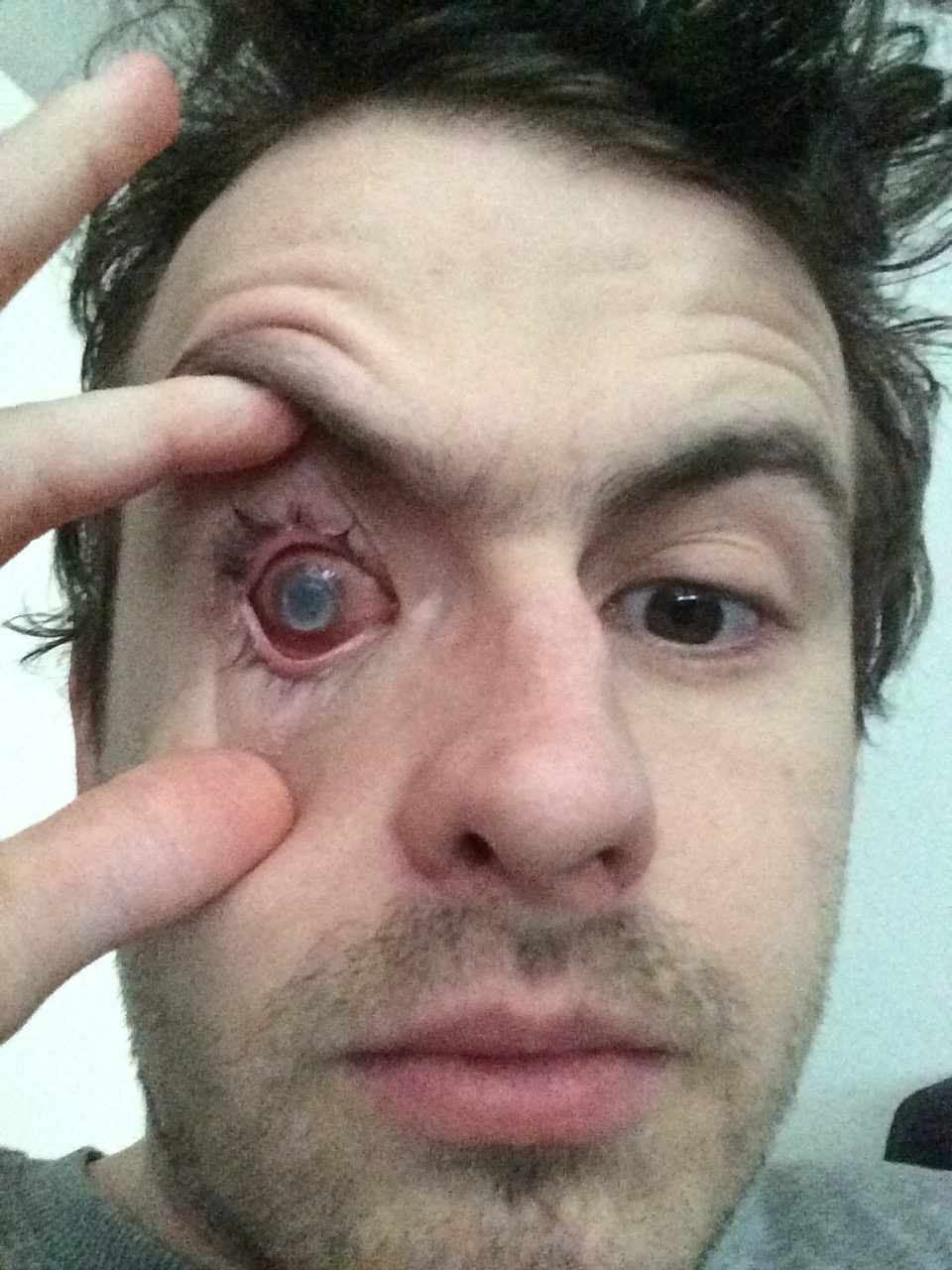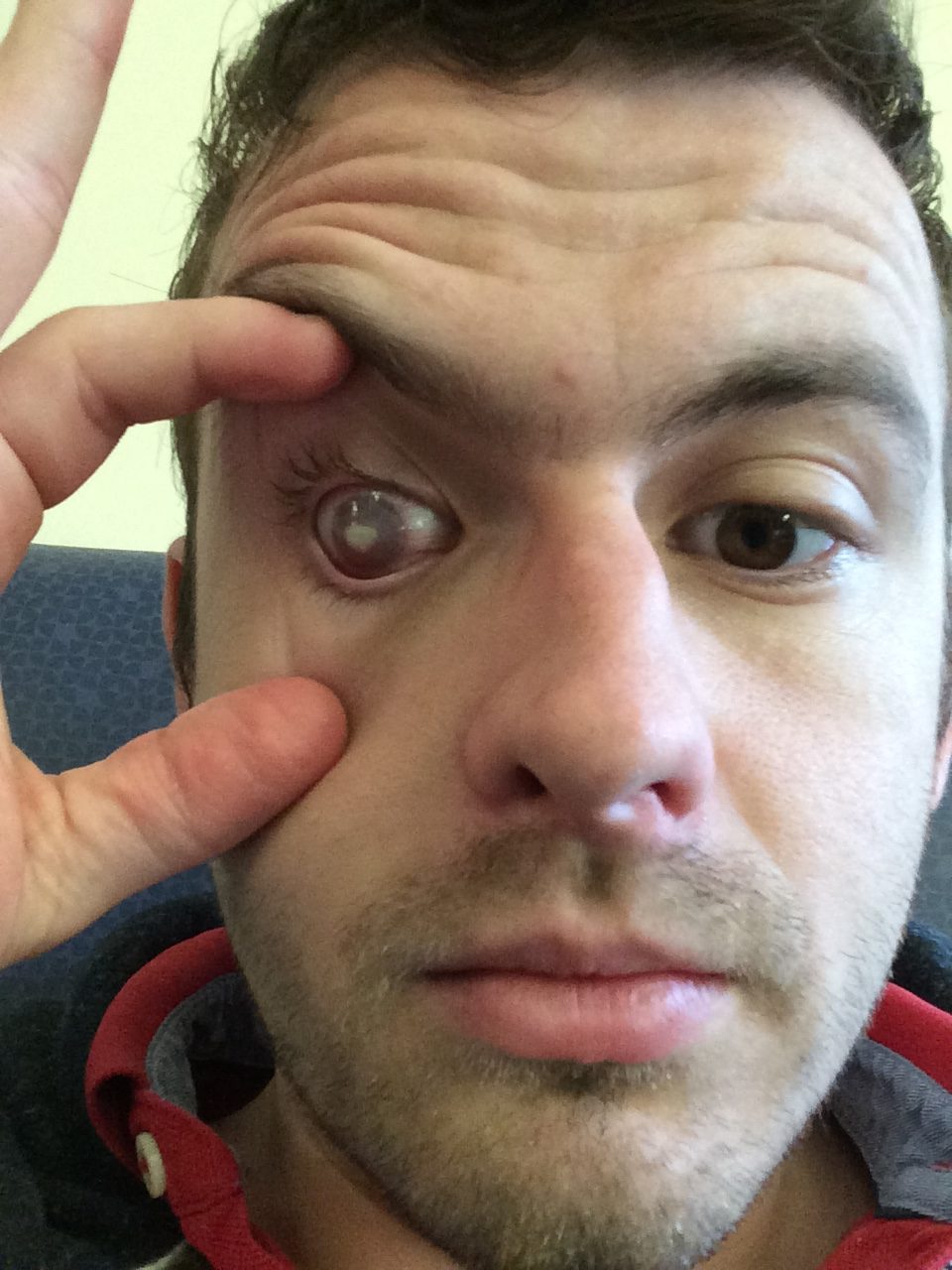Poll shows bad contact lens habits putting sight at risk

Nick Humphreys, a contact lens wearer from Shrewsbury, went blind in one eye as a result of developing Acanthamoeba keratitis
An online YouGov poll of 2,024 adults commissioned by charity Fight for Sight has revealed that many people are putting their sight at risk due to unsafe contact lens habits.
Of those surveyed who wore contact lenses (276 respondents), 56 per cent admitted they’d worn their contact lenses for more than the recommended time of 12 hours a day. In addition, more than half (54 per cent) of contact lens wearers in the poll admitted to having gone swimming or showering in their lenses, while 47 per cent admitted to having slept in them. Fifteen per cent had put contact lenses in their mouth to clean or lubricate them, and two per cent admitted to having shared their lenses with others when they had already been used.
According to the poll, almost a third (33 per cent) of contact lens wearers surveyed did not know that wearing contact lenses that had been washed in water could be sight-threatening, highlighting a lack of awareness around the risks associated with exposing contact lenses to water. Nearly half (47 per cent) said that information about the dangers of exposure to tap water was not clear on contact lens packaging or accompanying information materials.
Fight for Sight is raising awareness of the need to wash contact lenses in the correct solutions, after research funded by the charity last year showed a rise in cases of Acanthamoeba keratitis (Carnt, N et al. Acanthamoeba keratitis: confirmation of the UK outbreak and a prospective case-control study identifying contributing risk factors. B. J. Ophthalmol. 2018). The charity also is urging manufacturers to make the ‘no water’ message clearer on packaging. The most severely affected patients (a quarter of the total) had less than 25 per cent of vision, face prolonged treatment or become blind following the disease. Overall, 25 per cent of people affected require corneal transplants to treat the disease or restore vision. Read more on the research here.
Dr Neil Ebenezer, director of research, policy and innovation at Fight for Sight, said: “This type of infection [Acanthamoeba keratitis] can have serious consequence and even result in blindness, so the lack of awareness around the correct use of contact lenses is concerning. People who wear contact lenses need to make sure they thoroughly wash and dry their hands before handling them, and should avoid wearing them while swimming, face washing or bathing. Contact lens manufacturers should also do their part by making the ‘no water’ message clearer on all contact lens packaging and accompanying literature, and this message should be re-emphasised by opticians to ensure patients follow this important advice.”
A cautionary tale

Nick is supporting the charity’s campaign
Nick Humphreys, 29, from Shrewsbury, contracted Acanthamoeba keratitis in January 2018 and now has no sight in his right eye. Nick thought he simply had a bit of grit in his eye, until one day he couldn’t manage to open his eye at all and was having to drive with one eye shut. Concerned, he went to see his optometrist who referred him to hospital, where, seven days later and after multiple tests, he was diagnosed with Acanthamoeba keratitis. After two different treatments, Nick has no sight in his right eye but is waiting for a corneal transplant which he hopes will restore some of his vision.
“The whole experience was terrifying,” Nick said, “it was agonisingly painful and I didn’t know what was going to happen with my sight. At the beginning, I was in and out of hospital daily having toxic drops put in my eye every hour. I couldn’t work for six months, having to sit in a dark room wearing sunglasses because I was so photosensitive. Eventually, after months of doctors not knowing what to do about it, I had treatment – corneal cross linking, a procedure that aims to make the tissues in your cornea stronger. Coincidentally at around the same time, the bug finally went. This allowed me to go back to work for a month before I had a second surgery – an amniotic membrane transplant – which involved having a contact lens stitched onto my eyeball. It was as vile as it sounds.
“Though medically speaking the operation went well, when I removed the patch and looked at the eye in the mirror, my heart sank. I felt like something from the exorcist was looking back at me. Though I was now pain-free and able to resume a normal life, depression and anxiety kicked in because of my changed appearance. I’m now starting to feel slightly better about it all but still do not have sight in my right eye and am waiting for a corneal transplant to try and improve my vision.
“There needs to be more information on contact lens packaging about the risk of Acanthamoeba keratitis – so few contact lens wearers are actually aware this could happen if you don’t use contact lenses correctly.”
Nick is now working with Fight for Sight to help raise awareness of the condition following his experience.